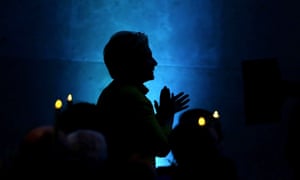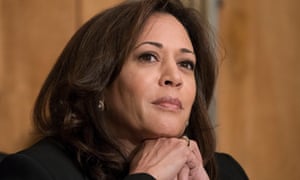
When I first found feminism, and felt furious about everything, my mother tried to calm me down: “You don’t want to walk around angry all the time.” The thing was, I did. The anger I found with feminism was full of joy and clarity. It felt infinitely better than the emotions that came before it: anxiety, aloneness, self-doubt, suspicion of other women that made me look their friendship in the mouth – when, really, we were natural allies. The childish part was to direct my anger at people I loved, and who loved me, because the world that they had worked so hard to launch me into was compromised, and they should have known. But the whole damn system was guilty as hell, and to say so felt like a relief.
Since the Harvey Weinstein story broke, inspiring the hashtag #MeToo to trend across social media, for many women the stream of revelations about abuses perpetrated by powerful men has brought back raw feelings of first insight and rage. Whatever else Facebook and Twitter are, they are machines for showing just how political the personal is, encouraging each of us to share the intimate details of our lives and then analysing these billions of data points for patterns. Once you see structure, you cannot unsee it. The vase becomes two faces, staring each other down. The question becomes: what next?
Enter Kate Manne. A book about the hatred of women could always find its news peg, alas. But it is difficult to imagine a more timely moment for Down Girl: The Logic of Misogyny. Manne is a professor of philosophy at Cornell University, and she uses the abstract tools of her discipline to parse current events. Her guiding question is as troubling as it is straightforward – to quote the comedian John Oliver: “Why is misogyny still a thing?”
Manne challenges what she calls the “naive conception”, a tendency to treat it at an individual level, as a psychological characteristic of particular men. As she points out, this approach has many weaknesses, not least that it tangles up each case of misogyny in the problem of other minds. Did Elliot Rodger, the 22-year-old who shot 20 people in Isla Vista, California in 2014, and who announced he wanted to punish women for rejecting him, really hate women? Or did he simply have a mental illness? Does President Trump hate women? But look how much power he gives his daughter! And so on.
The “naive conception” also renders misogyny “politically marginal”. If the litmus test asks whether a given man hates all women, we will find very little misogyny in the world. Most men have mothers, sisters, daughters, wives. For once, Manne argues, we should put individual men to the side. Misogyny is “a social and political phenomenon with psychological, structural, and institutional manifestations”. And we should evaluate those manifestations from the perspectives of its victims. #NotAllMen? #YesAllWomen.
Manne goes on to elaborate the gender norms that misogyny enforces. We exist in a gendered economy in which women are assumed to owe men. The rules are: first, we must give men moral goods – such as sex, care and unpaid housework. Second, we must not ask men for the kinds of goods we give. Finally, women are not supposed to take masculine coded perks and privileges. (The presidency, for instance.)
Manne proposes that sexism and misogyny are distinct. Sexism is an ideology, a set of beliefs, holding that it is natural, and therefore desirable, for men and women to perform these taking and giving roles. Misogyny functions like a “police force”, punishing women who deviate from them. Generally, this police force also rewards obedience – elevating women who advance patriarchal interests. But because it defines women in terms of a giving function, misogyny also tends to treat women as interchangeable. In order to take revenge on female classmates he felt had spurned him, Rodger set out to kill strangers – most of them sexually active males.
We are all still putting up with the same old forms of oppression in the workplace that we saw on Mad Men
The dynamic element of misogyny explains why the progress of some women in some spheres does not only not eradicate misogyny but can in fact intensify it. Indeed, it is logical that progress and backlash should go together.
Within the parameters that Down Girl sets for itself, the account of misogyny it provides is compelling. So I mean it as a compliment, as much as criticism, when I say I wish Manne the analytic philosopher could have engaged more with other feminist traditions – particularly the leftist feminism that emphasises material conditions and history. (She briefly cites Arlie Hochschild, the renowned sociologist who coined the terms “emotional labour” and “the second shift”, but does not identify or engage with the Marxist element of her arguments.)
In the absence of history, Down Girl seems to hover between two time frames: (a) an eternity in which patriarchy has always been the way it is, and (b) a present tense defined by the major news stories of the past few years. There is no investigation of why masculinity and femininity came to be constituted as they have. As a result, there are few suggestions about how our dismal gender relations could ever change.
The tradition that has revived among young leftists in the years since Occupy Wall Street offers an alternative approach. Manne defines the “giving” that women do in terms of “moral goods”, and notes that these goods – sex, care, and attention – are “morally” valuable. But the goods that women provide to men in their lives, and by extension to patriarchy, are not only moral; they are material. They are functions that need to be performed so that the world can go on. They are also functions that a capitalist state will not pay for – particularly not during times of austerity. This is why neoliberal privatisation and anti-feminism, or an insistence on the “traditional” family always go together. They did under Margaret Thatcher and Ronald Reagan. And they do now.

Kamala Harris, the Democrat senator from California. Photograph: Michael Reynolds/EPA
The left feminist tradition suggests that there is a way to change a society defined by “asymmetrical giving”: through better social provision of those same goods, through such mechanisms as family leave, childcare, healthcare, care for the elderly, equal wages. Such provision would empower women to choose whether or not to provide moral and material support to men – and, thus, would gradually change what men and women are.
The conclusion of Down Girl throws up its hands. Manne writes that she is “pretty pessimistic about reasoning with people to get them to take misogyny seriously”. This is fair; she has stated from the outset that her goals are diagnostic. And as Mary Beard’s Women & Power shows, there are plenty of reasons to feel “gloomy” about the prospects for change: the history of men keeping women from governing our own lives can be traced back to the roots of western culture.
Yet it seems crucial for feminist thinkers to strategise about building power. This will mean identifying practical measures that can make the lives of all women better.
At one level, the #MeToo moment is clearly a response to the grotesque, overt misogyny of Trump and those around him. But it also feels like a collective expression of the profound disappointment that a feminism focused on careers has not delivered what it promised – that we are all still putting up with the same old forms of oppression in the workplace that we saw on Mad Men. The feminism that said the answer was to seek professional status swore that if a few women could only get into power, the benefits would trickle down. Hillary Clinton was its incarnation – and suffered its most public betrayal. She worked harder than anyone, had more experience than anyone, put up with every humiliation, won over the bankers and generals, and was still denied “her turn”.
Down Girl is full of sadness about Clinton. Some of it I agree with; some of it I don’t. (I would prefer never to argue with another woman about Clinton again.) But American feminists cannot accept that a female leader will always, necessarily be doomed – for the sake of Karen Gillibrand or Kamala Harris, or whoever comes after, as well as all of us. Not only is misogyny “still a thing”. As Trump and his cronies eviscerate the state, and appeal to their base’s wounded masculinity, it is poised to become more of a thing than ever.
• Down Girl: The Logic of Misogyny is published by OUP USA.
